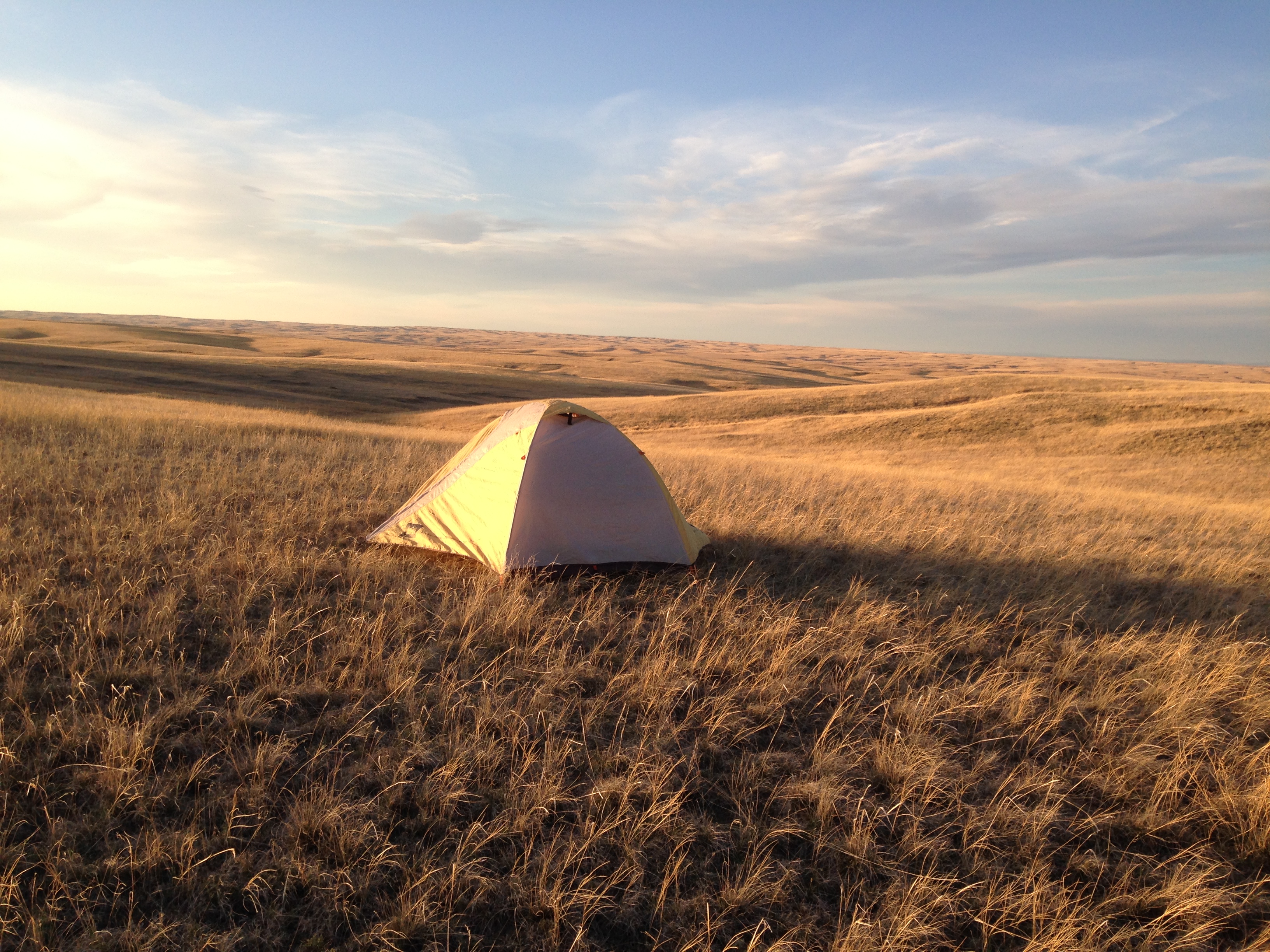Here’s a newsletter article from board member Drew Smith:
Camping on the GPT
 The GPT differs from other long trails in that most of the land it traverses is
The GPT differs from other long trails in that most of the land it traverses is
private, not public. For purposes of finding a continuous walkable route from
Texas to Canada, this is not as big a barrier as you might guess. There are
two reasons: there are lots of roads, and hardly anyone lives there.
In Nebraska, and most other states, any road that has been historically been used by the public is considered a public road, even if it was never officially bought, designated, condemned or even maintained by the state or county. So long as there is not a gate across a road, it probably is a public road, and thus OK to hike, bike, ride or drive on.
Of course, as any experienced long distance hiker will tell you, walking on
roads is no fun. They tend to be hot, dusty, and hard on your feet. Jumping out
of the way for cars, or walking in a weedy ditch to avoid them does not make for a
great hiking experience. But in low-population areas like western Nebraska, walking the back roads is actually not too bad. I spent a day last May scouting for GPTA on roads near Scottsbluff that were almost completely deserted. Over the course of a day I saw
exactly 3 cars. For all intents and purposes, this road was essentially a 2-
track trail through the short grass prairie. So walking it would be no problem.
Water wouldn’t be too much of a problem either—there are windmill-fed cattle
tanks every 10-15 miles on the eastern route.
 It’s camping that is the issue. There is a wonderful municipal campground in
It’s camping that is the issue. There is a wonderful municipal campground in
Scottsbluff, a good one at Lake Minitare SRA, and then nothing until Fort Robinson SP. Agate Fossil Beds NM doesn’t allow camping. So hikers in this section are faced
with a 70-mile stretch of classic and mostly wild short grass prairie in which
there are no legal camping options. Car support or stealth camping (the latter of which the
GPTA does not condone) are the only possibilities. Ideally, we would get landowner
permission to camp along the way. Figuring out the right way to do this will
be one of our goals and challenges for 2019 (and many years thereafter). Of
course, we don’t have to start from scratch. Other long-trail organizations,
such as the Continental Divide Trail Coalition should be a good source for
advice and best practices. But a lot of this process is just common sense: reaching
out to local communities, enlisting other trail users (such as mountain bikers and
trail riders) as allies, being respectful and responsive to landowner concerns.
Learning how to engage landowners effectively will be one of our goals as the
GPTA grows in 2019 and future years. We welcome input from our donors and
members, and look forward to your advice and support as we open up more
sections of the trail this year.
-Drew Smith


One Response
The Ice Age Trail has developed a camping designation called the Dispersed Camping Area. It is basically a spot with tent pads and no other facilities (campfire rings, latrines, etc) Campers can only camp one night. it’s meant for thru hikers that need a spot to crash.